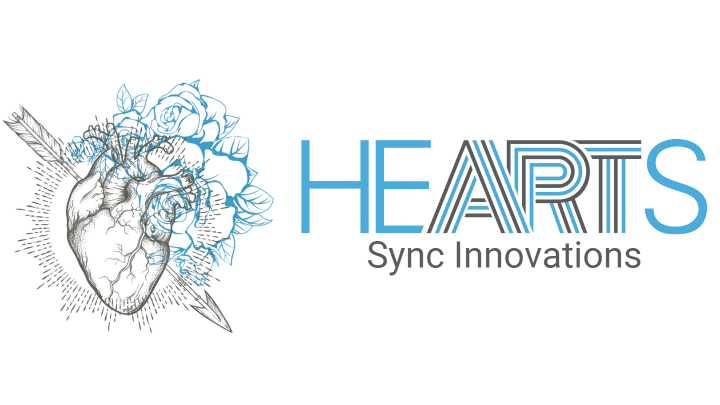When the US gynecologist and women’s rights icon Virginia Apgar developed the Apgar score in the 1950s, she shifted the focus of obstetrics to measurable health signals. Today, the focus is shifting again: from a passive preservation approach to active, intelligent movement during pregnancy. The question is no longer whether exercise is allowed, but which form of exercise promotes performance, tranquility, and safe development – for both mother and child.
Pregnancy is a physiological peak performance phase: blood volume increases, resting heart rate climbs, and ligaments become more elastic due to progesterone and relaxin. Movement remains healthy – with smart adjustments. The dosage and type are important: it’s not the calories that count, but the management of load. The anaerobic zoneintensity at which the body predominantly works without oxygen; usually very intense and not sustainable is reduced, and the pelvic floormuscular support system of the pelvis for bladder, uterus, and intestines is specifically strengthened. Risks mainly arise from heat stressexcessive increase in core body temperature, inadequate oxygen supply at high altitudes, and exercises that exert pressure on the abdomen or unstable lumbar-pelvic structures. Safe conditions include low to moderate intensities, low-impact movements, good hydration, and an environment with a comfortable temperature.
Regular, adjusted activity stabilizes endurance, improves body composition, and reduces back pain and stress – without endangering the child if the conditions are wisely chosen. Swimming enhances fitness, alleviates joint pressure, and does not negatively impact fetal well-being parameters [1]. Prenatal yoga can improve sleep, back pain, mood, and stress markers; fetuses tolerate an appropriate yoga practice well [2]. Kegel exercises strengthen the pelvic floor and reduce postpartum functional disorders; combined with electrical stimulation, the best functional gains were observed in one study [3]. At the same time, it is important to avoid heat peaks: moderate exertion in heat did not lead to dangerous core body temperatures in a controlled study, yet heat remains a stressor that should be carefully managed [4]. Exercise at high altitudes can strain the fetus’s oxygen supply, especially during prolonged intense activity – caution is advised here [5].
Three lines of evidence are particularly relevant to practice. First, a prospective observation of sedentary pregnant women indicates that a structured swimming program between weeks 16 and 28 measurably increases aerobic capacity, with stable blood pressure levels and no negative effects on fetal heart rate or Doppler parameters – a strong safety and benefit profile for water-based, low-impact endurance [1]. Second, the literature on prenatal yoga demonstrates that an appropriate practice – focusing on breathing, moderate asanas without prone positions, and intense stretches – can alleviate anxiety, depression, back pain, and sleep disorders; safety for beginners has been described, including unremarkable fetal tolerance [2]. Third, the pelvic floor receives special support: in a clinical study following vaginal delivery, the combination of Kegel training and electrical stimulation improved pelvic floor strength, vaginal pressure values, and quality of life more than any single intervention – an indication of how targeted neuromuscular training accelerates functional recovery [3]. Additionally, current research on thermal stress provides reassurance for moderate exercise in warm conditions under supervision: pregnant women did not exceed a critical core temperature in a laboratory setting, showed normal sweating responses, but felt subjectively warmer – a plea for a smart temperature and hydration strategy [4]. At the same time, the synthesis on altitude stress warns that above 1600 m, safety margins shrink due to lower uteroplacental blood flow, especially with more intense activity – here, reducing intensity and close monitoring are preventive measures [5].
- Prenatal yoga 2–3 times/week: Choose programs specifically for pregnant women. Avoid prone positions, extreme backbends, and deep twists; breathe calmly and evenly. Aim to enhance flexibility, breath control, and reduce stress [2].
- Swimming or aqua fitness for 20–40 minutes, at a moderate intensity: Use buoyancy to relieve joints. Maintain intensity such that conversation remains possible. Ideal for back discomfort and for cool training without heat stress [1].
- Kegel exercises daily: 3–4 sets of 10–15 contractions, holding for 5–10 seconds, then relaxing for the same duration. Combine with conscious breathing and an upright posture. For postpartum training, additional electrical stimulation may accelerate recovery – in consultation with professionals [3].
- Dancing at home for 10–20 minutes: Choose a non-slip surface, avoid jumps and quick turns. Drink a glass of water beforehand and keep something to drink handy. Aim to boost mood, integrate light endurance, and use fun as a compliance booster [6].
- Manage heat and altitude: Avoid training in oppressive heat or high humidity; prefer to train in the morning/indoors, cool down actively, and drink regularly [4]. Avoid or reduce intense exertion above 1600 m elevation; when staying in the mountains: shorter sessions, longer breaks, consult a doctor [5].
- Choose intensity wisely: Use the talk test or a moderate Borg scale (12–14/20) as a reference. High-intensity intervals are not necessary for many; if you were very fit before pregnancy and are medically cleared, remain cautious, prioritize technique and recovery. Initial studies with actively exercising pregnant women show no acute fetal disadvantages, but data are still limited [7] [8].
Movement during pregnancy is not a risk, but a tool – if you monitor temperature, intensity, and technique. Start this week with two swimming sessions or a yoga class, and integrate short Kegel sets daily; check your strategy with your doctor during stays at altitude or under special circumstances.
This health article was created with AI support and is intended to help people access current scientific health knowledge. It contributes to the democratization of science – however, it does not replace professional medical advice and may present individual details in a simplified or slightly inaccurate manner due to AI-generated content. HEARTPORT and its affiliates assume no liability for the accuracy, completeness, or applicability of the information provided.













